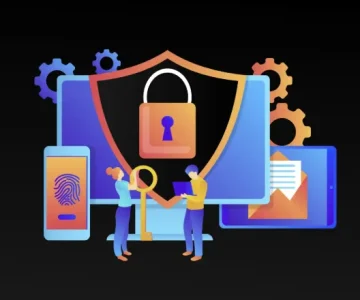Cybersecurity is no longer just about antivirus software and firewalls—it’s a constantly evolving battlefield. With the rise of AI-driven attacks, deepfake scams, and automated hacking tools, the skills needed to defend digital systems have changed dramatically. In 2025, the way cybersecurity is taught is shifting just as fast, with a focus on practical, hands-on learning rather than traditional textbook theory.
Universities, training centers, and online platforms are redesigning programs to prepare students with the same tools and methods used by industry professionals. Three technologies—Artificial Intelligence (AI), Blockchain, and Zero Trust security—are now the core pillars of modern cybersecurity education, shaping how tomorrow’s defenders will protect data and systems.
Why Cybersecurity Training is Changing
The growing urgency comes from both the scale of attacks and the shortage of skilled professionals. By 2025, global cybercrime losses are expected to reach $10.5 trillion annually, while over 3.5 million cybersecurity jobs will remain unfilled. At the same time, AI plays a role in more than 40% of advanced attacks, and most organizations are adopting Zero Trust models to close security gaps. Blockchain is also making its mark, with leading universities issuing tamper-proof digital diplomas to combat credential fraud.
AI in Cybersecurity Learning
AI has become a cornerstone of modern training, not just a topic of study. Students are learning to use machine learning algorithms for real-time threat detection, spotting anomalies such as unusual logins, phishing attempts, or previously unseen malware.
Generative AI is also being used to simulate live cyberattacks, allowing learners to practice defensive tactics under realistic conditions. Adaptive AI-driven learning platforms adjust scenarios based on a student’s actions, reinforcing concepts through immediate, tailored feedback.
Key skills gained:
- Fundamentals of machine learning for security
- Behavioral threat detection techniques
- Ethical and responsible AI usage
Blockchain in the Classroom
Blockchain’s role in cybersecurity education goes beyond cryptocurrency. Training now includes issuing and verifying digital credentials stored on blockchain networks—credentials that can’t be forged or altered. Students also explore decentralized identity management, learning how individuals can control and share their data securely without relying on centralized storage.
Smart contracts, another blockchain feature, are being used in educational settings to automate secure exam delivery and grading, ensuring integrity at every step.
Key skills gained:
- Blockchain architecture and operation
- Smart contract design basics
- Privacy protection through decentralization
Zero Trust Security in Practice
Zero Trust operates on the principle of “never trust, always verify.” In training programs, students work on micro-segmentation of networks, implementing least-privilege access policies, and deploying multi-factor authentication systems. Lab environments challenge learners to design secure networks where every user and device must re-authenticate before accessing new resources.
Key skills gained:
- Zero Trust network design
- Identity-first access control
- Policy creation for multi-layered security
How These Technologies Work Together
When combined, AI, Blockchain, and Zero Trust create a powerful security framework. AI monitors user behavior in real time, raising alerts for suspicious activity. Blockchain ensures that identity and access logs are immutable and verifiable. Zero Trust enforces strict access controls, ensuring that even authenticated users must prove their legitimacy at every step.
The Structure of Modern Cybersecurity Courses
A typical 2025 cybersecurity program now blends theory with applied practice:
- AI for Cyber Defense: Students learn to deploy AI tools to detect threats and prevent breaches.
- Blockchain for Data Integrity: Hands-on work with tamper-proof credentialing and decentralized identity systems.
- Zero Trust Implementation: Building secure networks with strict access verification and segmentation.
- Integrated Labs: Simulated cyber incidents combining all three technologies for holistic problem-solving.
- Capstone Projects: Team-based solutions to real-world security problems, such as phishing detection tools, blockchain-based identity platforms, or Zero Trust enterprise models.
Career Impact
Professionals with expertise in AI-driven threat detection, blockchain credentialing, and Zero Trust security are in high demand. Many certification programs now include these skills, and industries from finance to healthcare are actively seeking candidates who can apply them in practice.
Challenges Ahead
Adopting these technologies in education isn’t without hurdles. High-performance infrastructure is needed to run AI and blockchain labs. Instructors must keep pace with rapid technology changes, and ethical considerations—such as bias in AI or privacy in blockchain applications—must be addressed from the start.
Final Thoughts
Cybersecurity education in 2025 is embracing the tools that define modern defense. AI, Blockchain, and Zero Trust are no longer niche subjects—they are the foundation of how security professionals are trained. By focusing on applied learning and real-world tools, today’s students are preparing to protect tomorrow’s digital world with speed, intelligence, and integrity.





